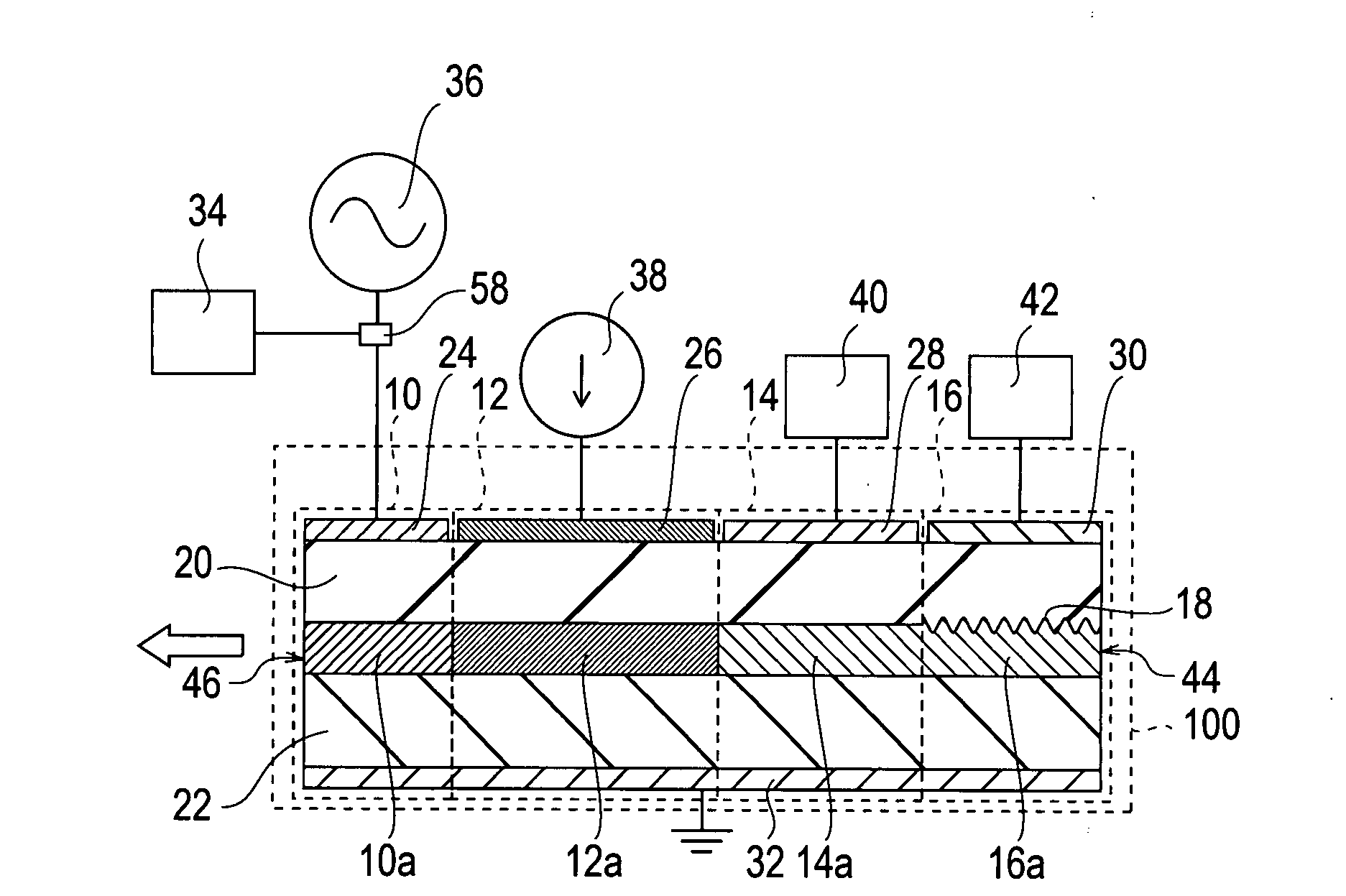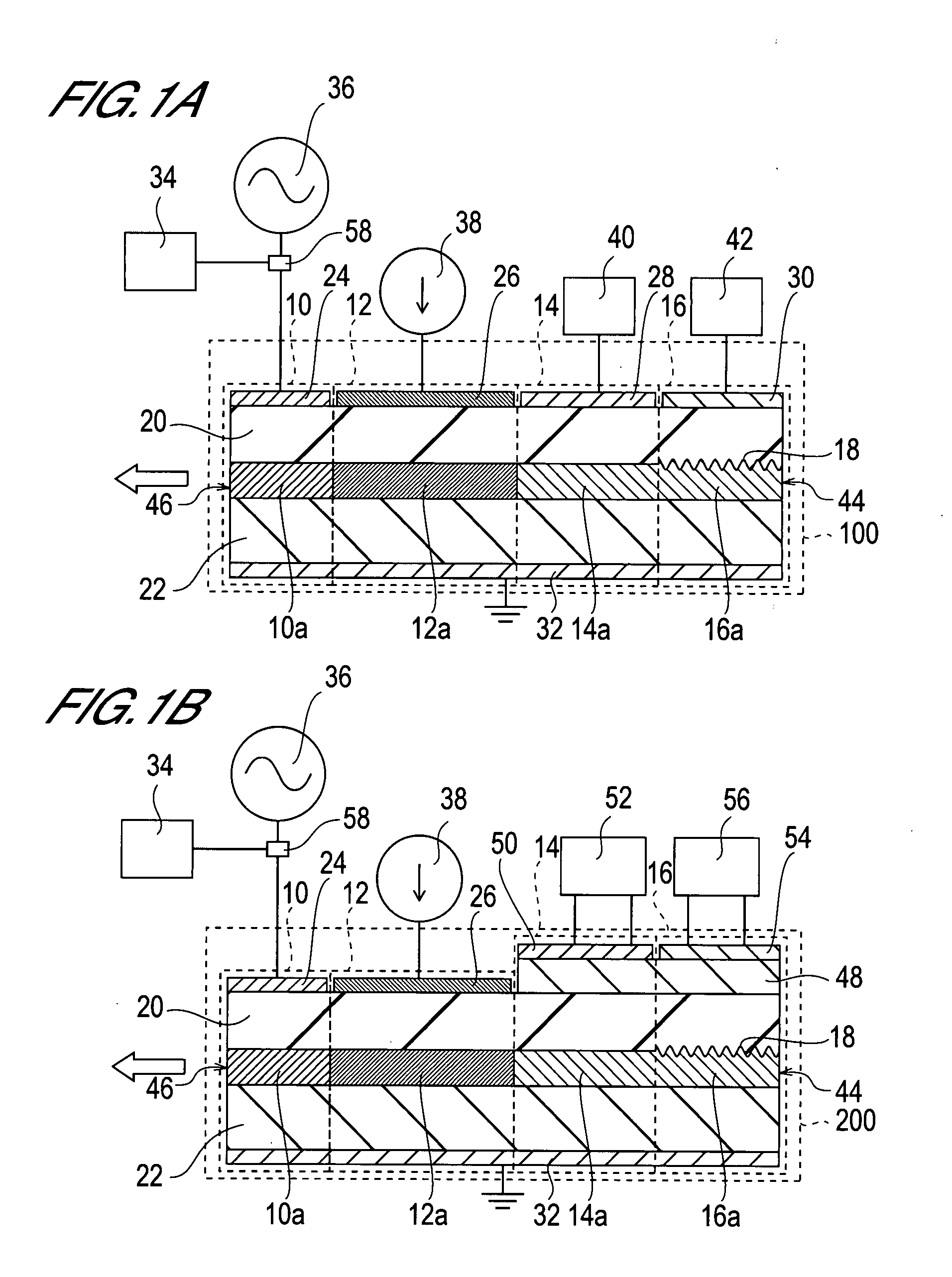Carrier-suppressed optical pulse train generation method and mode-locked semiconductor laser diode for realizing this method
a carrier-suppressed optical pulse and laser diode technology, applied in the direction of optical resonator shape and construction, instrumentation, laser details, etc., can solve the problems of large device for realizing the first method, high power consumption of the first method, and inability to achieve a wide spectrum of optical pulse signals
- Summary
- Abstract
- Description
- Claims
- Application Information
AI Technical Summary
Benefits of technology
Problems solved by technology
Method used
Image
Examples
first embodiment
[0097]The constitution of a first distributed Bragg reflector semiconductor laser for realizing a first CS optical pulse train generation method will be explained by referring to FIG. 1A and FIG. 1B. Further, the mode-locked operating principle of this first distributed Bragg reflector semiconductor laser will also be explained. FIG. 1A and FIG. 1B are both diagrams for explaining a first mode-locked semiconductor laser diode, that is, diagrams for explained a simplified structure of a distributed Bragg reflector semiconductor laser for realizing a first CS optical pulse train generation method.
[0098]FIG. 1A shows an enlarged cross-sectional view of a distributed Bragg reflector semiconductor laser for realizing changes to the effective indices of the optical waveguides of a phase control region and a distributed Bragg reflector region by virtue of the plasma effect or the Pockels effect. Further, FIG. 1B shows an enlarged cross-sectional view of a distributed Bragg reflector semico...
second embodiment
[0180]The constitution of a distributed Bragg reflector semiconductor laser 300, which is a second distributed Bragg reflector semiconductor laser for realizing a second CS optical pulse train generation method, will be explained by referring to FIG. 11. The mode-locked operation principle of this distributed Bragg reflector semiconductor laser 300 will also be explained. FIG. 11 is a simplified enlarged cross-sectional view of the distributed Bragg reflector semiconductor laser 300 for realizing a second CS optical pulse train generation method.
[0181]The distributed Bragg reflector semiconductor laser 300 differs from distributed Bragg reflector semiconductor lasers 100 and 200 in that an optical absorption coefficient adjustment region 60 is also integrated into the cavity facet side of the distributed Bragg reflector region 16. The constitution of the parts other than this is the same as that of distributed Bragg reflector semiconductor lasers 100 and 200 shown in FIG. 1A and FIG...
third embodiment
[0214]The constitution of a Fabry-Perot external-cavity type semiconductor laser 400 used in a third CS optical pulse train generation method will be explained by referring to FIG. 16. FIG. 16 is a simplified enlarged cross-sectional view for illustrating the constitution of a Fabry-Perot external-cavity type semiconductor laser 400 of a third embodiment. The Fabry-Perot external-cavity type semiconductor laser 400 is constituted comprising a wavelength filter 68, which converts a center transmission wavelength to a frequency f0, and a multi-electrode semiconductor laser diode element 500, which is constituted by linearly arranging an optical modulation region 10 comprising a function for modulating optical intensity, and a gain region 12, in which population inversion is achieved. This wavelength filter 68 and this multi-electrode semiconductor laser diode element 500 are arranged linearly and housed in an external cavity.
[0215]More specifically, the Fabry-Perot external-cavity typ...
PUM
 Login to View More
Login to View More Abstract
Description
Claims
Application Information
 Login to View More
Login to View More - R&D
- Intellectual Property
- Life Sciences
- Materials
- Tech Scout
- Unparalleled Data Quality
- Higher Quality Content
- 60% Fewer Hallucinations
Browse by: Latest US Patents, China's latest patents, Technical Efficacy Thesaurus, Application Domain, Technology Topic, Popular Technical Reports.
© 2025 PatSnap. All rights reserved.Legal|Privacy policy|Modern Slavery Act Transparency Statement|Sitemap|About US| Contact US: help@patsnap.com



